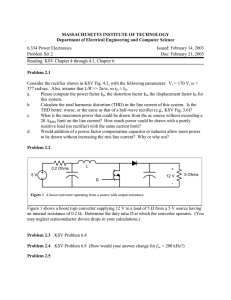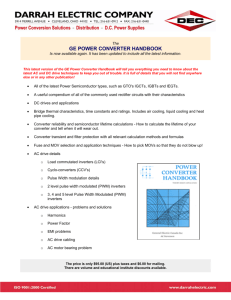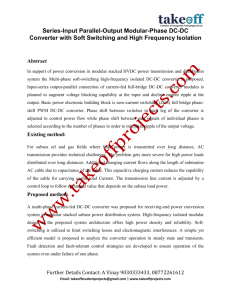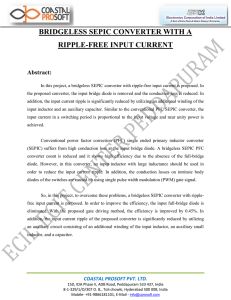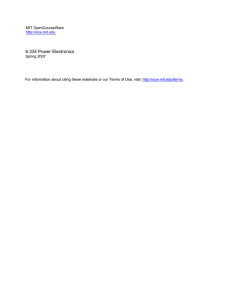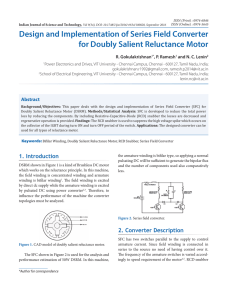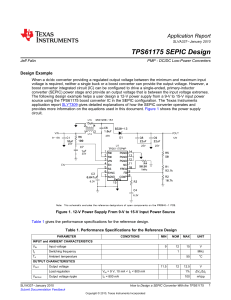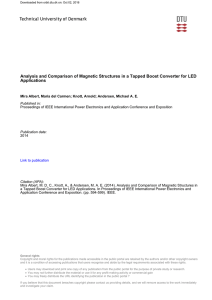6.334 Power Electronics MIT OpenCourseWare rms of Use, visit: .
advertisement
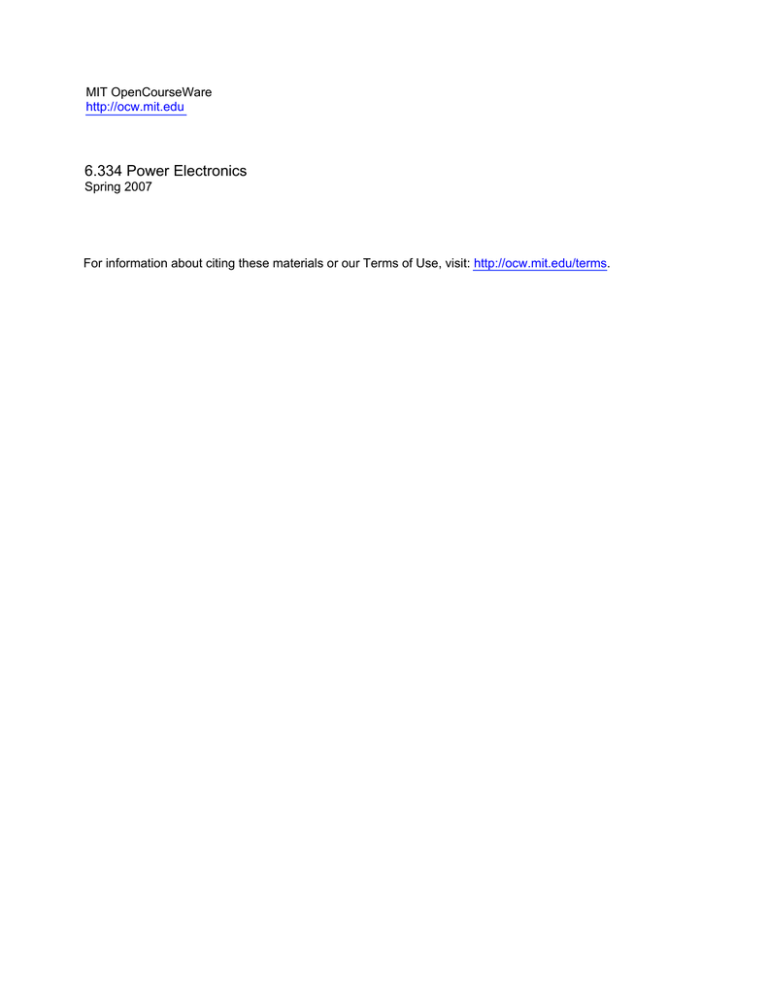
MIT OpenCourseWare http://ocw.mit.edu 6.334 Power Electronics Spring 2007 For information about citing these materials or our Terms of Use, visit: http://ocw.mit.edu/terms. MASSACHUSETTS INSTITUTE OF TECHNOLOGY Department of Electrical Engineering and Computer Science 6.334 Power Electronics Problem Set 3 Issued: February 23, 2007 Due: March 2, 2007 Reading: KSV Chapter 20 Problem 3.1 Shown below is a type of indirect converter known as a SEPIC converter (Single-Ended Primary Inductor Converter). Please calculate its voltage conversion ratio V2/V1. Also, assuming that the capacitors and inductors are all very large (small ripple), please calculate the maximum steady-state voltage on capacitor C1. C1 V1 + vC - D + C2 V2 R Figure 1 A Single-Ended Primary Inductor Converter (SEPIC Converter). Problem 3.2 Consider the Ćuk converter of KSV Fig. 6.19(c). Assuming that the two inductors are allowed the same ripple ratio (RL1 = RL2 = R), find the total inductor energy storage of the converter. How does this energy storage requirement compare to the conventional buck-boost converter for the same inductor ripple ratio? Problem 3.3 KSV Problem 6.13 Problem 3.4 Consider the discontinuous conduction mode (DCM) converter of KSV Fig 6.25, with waveforms in Fig. 6.24. a. Find the average output current in DCM operation as a function of L, T, D, V1, and V2. b. Assume the converter has the following parameters: V1 = 25 V, L = 1 µH, R = 2 Ω, f = 300 kHz At what value of duty ratio D does the transition between continuous and discontinuous conduction modes occur? c. What happens to this converter in the limit when R becomes very large? Problem 3.5 KSV Problem 20.1 Problem 3.6 Partial data for a Philips ER35/21/11 ferrite core half is illustrated in Figure 2. Two of these core halves are placed together to form a closed magnetic path, with a winding encircling the center leg of the core set. The (Philips 3C90) material permeability is 1900µ0, and the allowed flux density BS is approximately 0.35 T. a. Create a magnetic circuit model for a winding on this core set, including the reluctances of the main magnetic paths. (You need not consider “leakage flux” traveling through the air.) b. Please find the specific inductance, AL, of the core set. AL is the number of nanoHenries for a single-turn winding. c. How many ampere-turns can be applied in a winding on the core without exceeding the maximum allowed flux density? d. What is the maximum (saturation) current limit for a 10-turn winding on the core? e. A 250 µm gap is now inserted in the center leg of the core set (by grinding down the center leg of one of the core halves). Find the inductance and maximum (saturation) current for this new configuration with a 10-turn winding. How does the total energy storage capability compare to the ungapped case? Figure 2 Partial data for an ER ferrite core half from Philips components.

